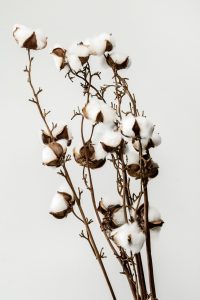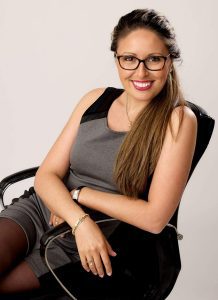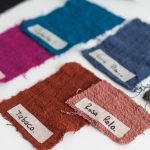Exploring the world of bedding: types, qualities and choosing the perfect set
The bed is the place where we spend a third of our daily time, so we suggest that you take into account the quality of the product you choose as your bedding. Today in Pueblo Rico we are going to give you some quick tips on how to choose the best materials for your home.
First of all, we advise you to take fabrics that have a minimum of 200 threads and a maximum of 600.
Leaving this range can mean that the fabric is heavy due to the number of threads, or failing that, the lack of weft, generating a rough sensation of a rough fabric.
Is the number of threads the indicator of quality?
Thread count is a metric or indicator, but thread count depends on thickness and quality of threads and this is definitely NOT an indicator of quality.
The thread count is the result of counting the number of threads that a fabric has horizontally and vertically on a certain surface and here is the “deception” that many manufacturers make us: they give us a thread count, but they do not indicate which one is. the surface measured as a reference.
The European standard determines that the number of horizontal and vertical threads must be counted on a surface of one square inch.
However, the norm in other countries, such as Australia, determines that the count is carried out on a surface of 10 square centimeters, therefore, the same fabric can have a different number of threads depending on the norm used.
As we told you before, some manufacturers play with the ends or threads that each thread has when counting, even multiplying the thread count by 3, arguing that each end or thread counts as a thread, but since you know the trick, always look at the standard with which the count was made and do a little review of the following:
Appearance: see if it is glossy or matte, look for a sample to appreciate the drape that the sheets have when they are placed on the bed and the luster of the fabric.
Softness: for this you have to touch the material and define if they are more or less soft and if they have a more or less silky and slippery touch.
Touch: that they are more or less hot when touched or, conversely, that you feel more or less cold upon contact.
Certifications: certifications of antibacterial, anti-allergic treatments, or specific treatments for other types of hypersensitivities or health conditions, as well as anti-pilling treatments, ease of ironing, resistance to washing or drying, can be helpful.
Composition: The material is a determining factor in the behavior or properties that the sheets will have, which can be made of cotton, wool, linen, silk, bamboo or polyester.
Breathability: Some buyers tend to sweat or get too hot and will need to purchase highly breathable sheets.
Commitment to the environment: Specific certifications of this type are additional guarantees for those buyers who are committed to caring for the environment.
Having said that, we now invite you to review the names and main characteristics of the fabrics that we will find on the market:
• Linen and Flannel: up to 200 threads
• Percale: between 200 and 350 thread count, brushed cotton up to 400 thread count
• Satin and Egyptian cotton: between 300 and 500 threads
Linen and flannel:
It has become fashionable to achieve those boho, country, rustic effects or in those spaces that want a “raw” effect in their materials. The advantages of choosing a fabric with these characteristics is that it is an excellent heat concentrator in winter and a very cool material in summer, keeping moisture away from us and reducing static.
Percale:
Renowned for their freshness and breathability, these sheets are characterized by their softness and fineness to the touch without losing strength and durability. An important tip is to look for them in their combed cotton version.
Egyptian cotton and satin:
Egyptian cotton sheets are top-rated bedding for their softness, comfortable feel, and durability. This material does not produce pilling, so the appearance of uncomfortable little balls will be nil. – It is hypoallergenic, so Egyptian cotton sheets prevent skin irritation. These sheets are characterized by being composed of the finest and longest Egyptian cotton fibers.
Sheets with more than 600 threads:
These sheets are ideal for those people who like to feel the weight of the sheets. This thread count results in sheets with more body and are firmer and those who rest between these types of sheets will feel more wrapped and warm, so they can be a great option for people with more chills.
Play, create, combine and design your relaxation space.
We are here to help you!
ESTEFANI BATISTA
Partner – Interior Designer
(+34) 637 493 356
(+34) 952 130 841
Centro Comercial Guadalmina IV, Local 92, primera planta.
29670, Guadalmina Alta, Marbella.




